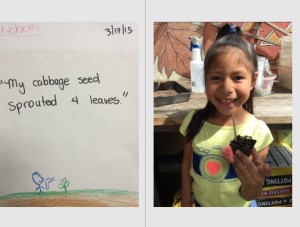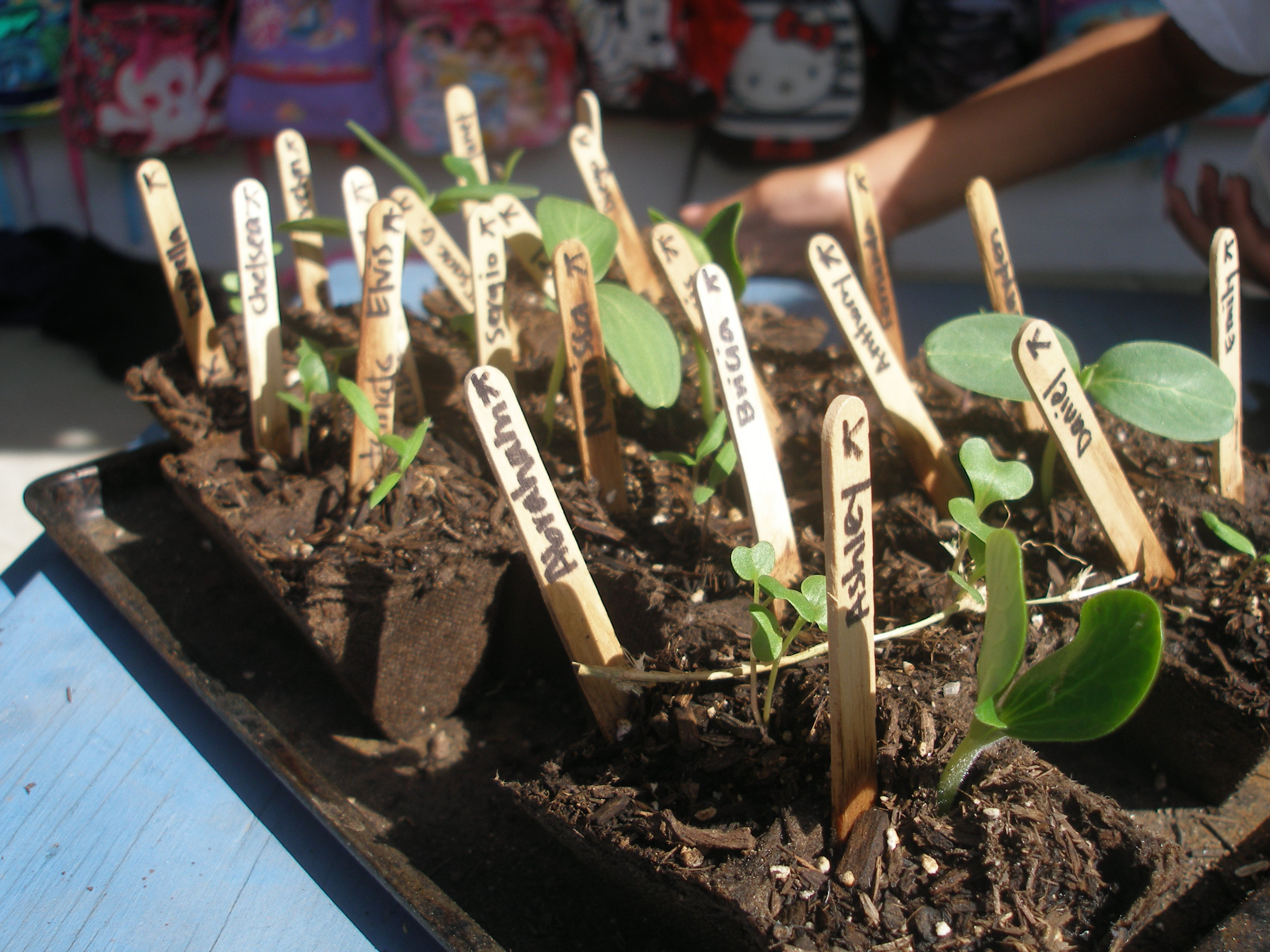The School-Based Health Alliance, in partnership with Kaiser Permanente Thriving Schools, launched its Hallways to Health program to encourage health to move from the school-based health center (SBHC) into the school hallways, classrooms, cafeterias and the community. The Alliance is testing new and innovative techniques through 15 high-performing SBHCs to promote healthy eating, active living, and social and emotional health.
One of those SBHCs, located at Rea Elementary School in California, is encouraging healthy habits through a vegetable garden project. Students selected their favorite vegetable to plant from seeds and grow. The project will culminate in an end-of-school-year harvest, along with a pizza party using the vegetables directly from the garden.
But the garden is being used for more than an opportunity to teach students about nutrition and sustainable food sources. A speech therapist is also using the garden to help students expand and develop language through hands on experience.

“Talk about connecting health and education!” said Laura Garcia-Chandler, a nurse at the SBHC staff at Rea Elementary. “This is of significant value. The speech therapist is using an evidence-based framework to expand and develop language and speech acquisition with hands-on experiences for the students. The students will be developing speech and language and learning about nutrition.”
SBHCs all across the country provide children and adolescents access to the health care services they need to thrive, such as flu shots, annual physicals and mental health counselors. Yet, the Hallways to Health initiative goes further, putting best practices into play with innovative new ideas and techniques to reach students and the community. Hallways to Health allows SBHCs to work based on what is best for the school district and the families they serve. The program also shows how a little creativity in addressing health concerns — from nutrition and food justice, to social and emotional learning — goes a long way.




